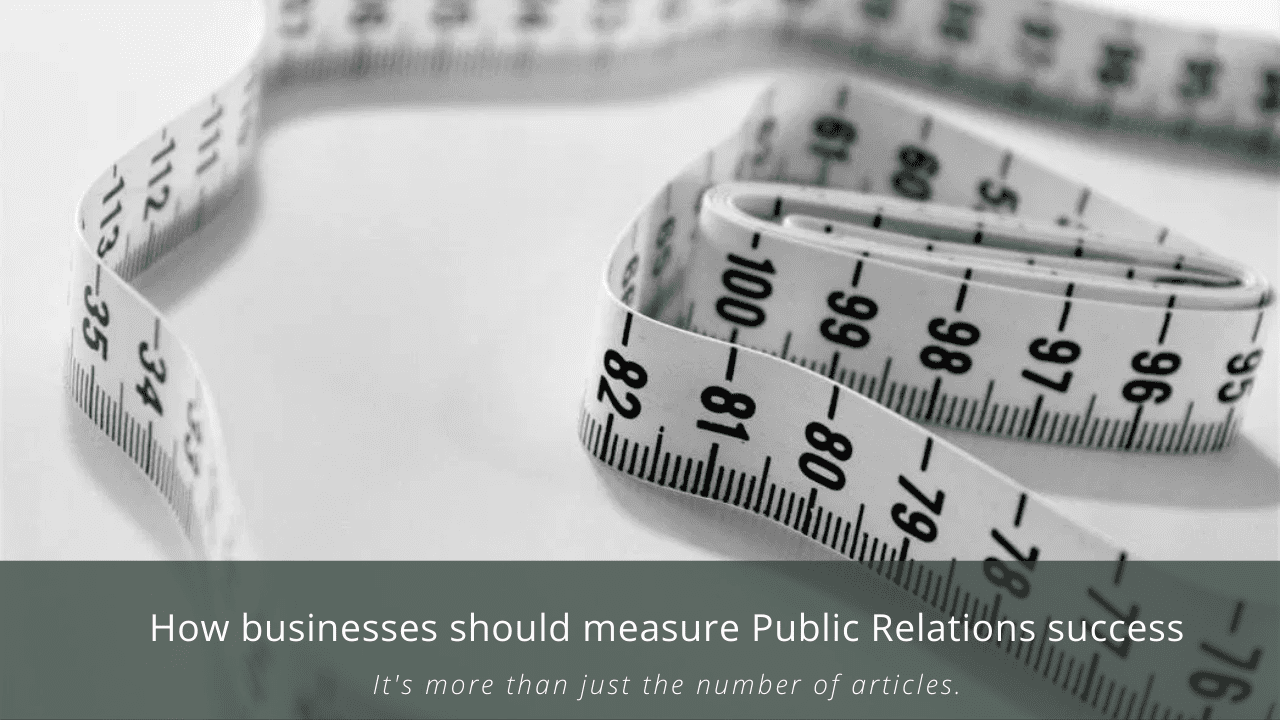It is a common misconception that you cannot quantitatively measure public relations or PR success other than counting the number of articles that mention your brand. Companies often have trouble relating PR success to business success, because how do you attribute your revenue to media coverage? I’ve personally spoken to over 200 CEOs or marketing leads in the last 12 months, and over 90% still measure PR success by the number of articles.

However, this has become an antiquated way of looking at success. As we have evolved into a digital economy, it has become easier to track consumer behaviour, online traffic and inbound leads, which we can directly attribute to business success. Services like digital marketing and most forms of advertising have incorporated measurement into their services, making it easier for businesses to understand their value.
PR remains the odd one out for most companies, as tracking the number of articles and attaching a “PR value” to media is still the norm in Singapore and most of Southeast Asia. The main reason for this is the fact that many businesses focus on KPIs (Key Performance Indicators) and ROI (Return on Investment) without putting proper context to these numbers.
Measurement is possible
You can actually measure PR that is aligned with your business success.
Besides measuring the number of articles generated, positive vs negative sentiment and other factors, most of which are not directly tied to business goals, you should be taking real factors like inbound lead generation and web traffic into account as success metrics for PR campaigns.
This is especially important to young businesses with smaller budgets and tight bottom lines. Vanity metrics are not useful to brands that need to know that every dollar is spent wisely and effectively. If they are to invest in PR services, they must be able to track the success of these services that ties to their bottom line.
What is PR measurement?
How do you define success?
Look at what you consider to be a success in business and tie your PR goals to that. If you’re looking at inbound lead generation, increasing web traffic or visibility in the investment sector, then make sure your PR efforts are focused on that.
Vanity metrics are not useful to brands that need to know that every dollar is spent wisely and effectively.
There is the urge to use the amount of coverage as a KPI for success, but it doesn’t actually mean success. Let me use an example to illustrate my point more clearly.
Through my company SYNC, we work with an enterprise B2B business that is based in Singapore but covers the global market. Let’s call them Brand X for now.
When they were looking for publicity, we decided to focus on getting them the right type of coverage in the media that would generate genuine business leads. Rather than focusing on a long-drawn-out campaign to generate as much coverage as possible, we looked at creating a targeted impact and secured them an in-depth interview with a technology trade publication. By focusing our efforts and promising an exclusive interview, we were able to generate coverage that delved into a strong topic.
Brand X was able to triple its inbound lead generation after the interview was published, helping increase its sales pipeline and revenue.
Why this matters
In the communications industry, at large, we sometimes see PR as a love-child of the marketing and advertising department, and the media call it the ‘dark side’. However, it is an effective and efficient business tool.

The industry as we see it now is a little stagnant and doesn’t quite know how to properly measure its impact. Add to that the rapid rise of the digital economy and aggressive tech disruption, PR is being left behind as it struggles to keep pace.
If businesses learn how to measure PR success, they will be able to effectively use it as a customer acquisition tool that is both cost-effective and sustainable.
This article originally appeared on SBO.sg under the title “How Businesses Should Measure Public Relations Success“.
Last updated 11 June 2020.

